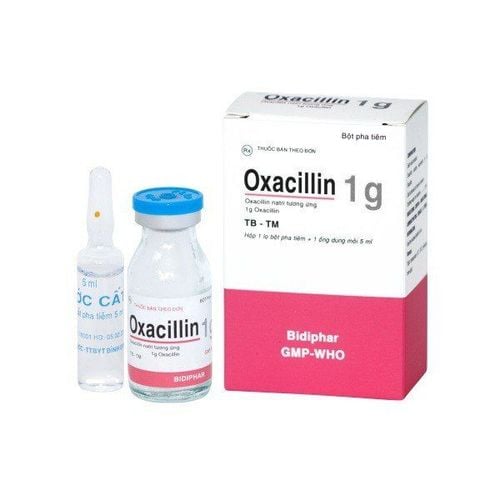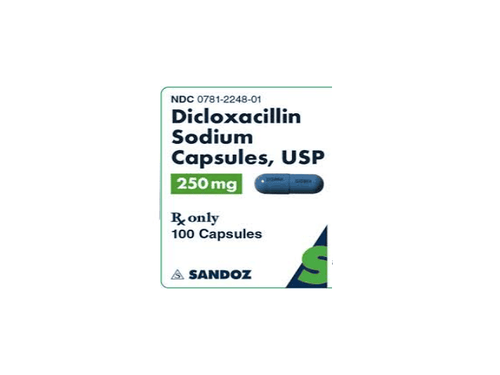This is an automatically translated article.
Merugold belongs to the group of antibiotics whose main ingredient is Meropenem, which is commonly used intravenously in the treatment of gram-positive, gram-negative and anaerobic and aerobic bacterial infections. So is Merugold good and how does it affect the body?1. What is the effect of the drug Merugold?
Merugold drug has the main ingredient Meropenem is an antibiotic of the Carbapenem group - a beta-lactam antibiotic with a broad antibacterial spectrum. Meropenem has a bactericidal effect by binding to PBPs, thereby inhibiting bacterial cell wall synthesis. Because of Meropenem's very good resistance to beta-lactamase, bacteria resistant to beta-lactams can still be susceptible to Meropenem. Meropenem is more stable to renal dehydropeptidase, therefore, when used in combination with Cilastatin. The spectrum of activity of Meropenem is very broad, against both gram-positive and gram-negative bacteria and anaerobic as well as aerobic bacteria, specifically as follows:
Gram-negative bacteria: E.coli, Pseudomonas spp (except ertapenem), Neisseria , Salmonella, Acinetobacter sp (except ertapenem), Klebsiella, Proteus sp... Gram-positive bacteria: Listeria, methicillin-susceptible Staphylococcus aureus, Bacillus spp, Streptococcus... Anaerobic bacteria: Peptostreptococcus, Eubacterium, fragilis, Fusobacterium... Merugold is usually indicated in the following cases:
Community-acquired pneumonia and hospital-acquired pneumonia; Urinary tract infections; Intra-abdominal infections; Gynecological infections, endometritis and pelvic inflammatory diseases; Skin and skin structure infections; Meningitis ; Sepsis; Empiric antibiotics for suspected bacterial infections in adults with febrile neutropenia as monotherapy or in combination with antiviral or antifungal agents; Intravenous Meronem has been shown to be effective in patients with cystic fibrosis and chronic lower respiratory tract infections when used as monotherapy or in combination with other antibacterial agents. Merugold is contraindicated in patients with hypersensitivity to any of the components of the drug, do not mix Merugold with other drugs and do not use Merugold in children with impaired renal function.
2. Dosage of the drug Merugold
Depending on the subject and the goal of treatment, the dose of Merugold will be different, specifically as follows:
For adults:
Treatment of meningitis: 2 g/day mixed meropenem with distilled water for injection , can be infused or injected intravenously, up to 3 times/day; Treatment of peritonitis, hospital-acquired pneumonia or suspected bacterial infection in patients with leukopenia, sepsis: 1 g/day, once every 8 hours, injected or infused, up to 3 times/day; Treatment of gynecological infections, pneumonia, urinary tract infections, skin and skin structure infections: 500 mg/day; Patients with renal impairment require dose adjustment depending on plasma creatinine clearance. For children:
Children over 50kg take the same dose as adults; Children from 3 months to 12 years old: Meropenem dose = (10-20) (mg) meropenem x weight (kg); Do not give the drug to children with impaired kidney function.
3. Side effects of the drug Merugold:
In some patients when using the drug Merugold may experience side effects such as:
Allergic reactions: Urticaria, rash, itching, angioedema and anaphylactic reactions Diarrhea, abdominal pain, nausea , vomiting, pseudomembranous colitis Pain at the injection site, thrombophlebitis; Reversible thrombocytopenia, eosinophilia, thrombocytopenia, leukopenia, and neutropenia Increased serum bilirubin, transaminases, alkaline phosphatase and lactic dehydrogenase concentrations alone or in combination Headache, Paresthesias, convulsions as a side effect on the central nervous system Oral and vaginal candidiasis
4. Be careful when using the drug Merugold
Some general notes when using Merugold include:
Before starting treatment with Meropenem, it is necessary to ask the patient about a history of hypersensitivity to beta-lactam antibiotics, penicillins and cephalosporins. If hypersensitivity reactions occur, the drug should be discontinued immediately; It is necessary to monitor transaminase and bilirubin levels in patients with liver disease during the use of Merugold; As with other organisms, proliferation of drug-insensitive organisms may occur and therefore require constant patient monitoring; The use of Merugold is not recommended in patients with infections caused by methicillin-resistant Staphylococcus species; Caution should be exercised when meronem is co-administered with potentially nephrotoxic drugs; Meropenem may decrease serum valproic acid concentrations in some patients. Tolerability efficacy of Merugold in infants less than 3 months of age has not been established and therefore is not recommended for this population; The safety of Meronem in pregnancy has not been fully evaluated, so direct medical supervision is required for all use of Merugold by a pregnant woman.
Common drug interactions with Merugold include:
Probenecid competes with Meropenem for active tubular secretion and thus inhibits renal excretion of Meropenem, causing an increase in its half-life and plasma concentrations. ; Meropenem may decrease serum valproic acid levels. In some patients, serum valproic acid concentrations may be lower than therapeutic concentrations; Meronem has been used concomitantly with other drugs without adverse pharmacological interactions. However, there are no specific data on the potential for drug interactions (with the exception of Probenecid as outlined above). In summary, Merugold is an antibiotic indicated in the treatment of gram-positive, gram-negative and anaerobic as well as aerobic bacterial infections. To ensure safety for your health and maximize the effectiveness of your treatment, you need to take Merugold exactly as directed by your doctor.
Please dial HOTLINE for more information or register for an appointment HERE. Download MyVinmec app to make appointments faster and to manage your bookings easily.













